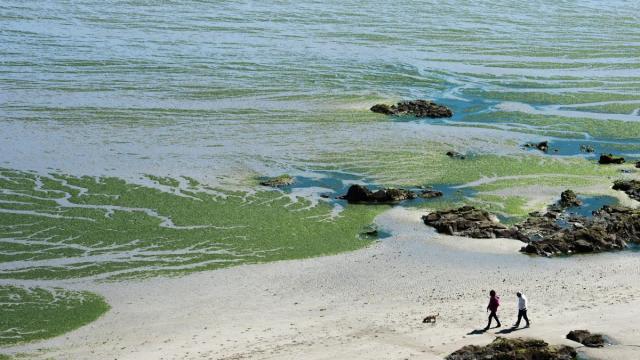Since spring, 7300 tons of green algae were collected in the bay of Saint-Brieuc. “it is on the decline,” said the president of the local water commission, Jean-Luc Barbo.Interview.
On July 18, what is the tonnage of green algae collected in the bay of Saint-Brieuc?
Since mid-April, 7300 tonnes were collected. Between 2010 and 2016, it reached 5 100 tons, with a peak of 8100 tonnes in 2012. The green algae are turning white. They are lack of nitrogen. If it does not rain, it is estimated they are in decline. We are far from tsunami reported by the national media.
Some speak of a collection of sea algae. What do you think?
You could probably improve the collection. Is this pickup at sea, perhaps? But what method? It would be interesting to take stock in the autumn for example. If we increase the collection, it will also increase the capacity of the treatment plant, which nearly reach saturation. It is the choice of the curative or preventive.
A second fight against proliferation plan is launched for 2017-2021. Where are we in the Bay?
We are still negotiating. There has been progress. On some lines, it still lacks answers. The bay has specific characters with the watershed. If we agree with the funder, could sign the plan, built with local officials in the fall. It sets the same strategy as the first. In summary, to minimize the nitrogen leaks.
In 2027, the goal is to reach 850 tonnes of nitrogen in the bay, but above 130 tonnes between May and September, the sensitive period. Farmers and prescribers are such to modify their farming practices in the watershed. However, there is also bad news: organic and inorganic nitrogen pressure increases on some areas of the bay-watershed. If nitrogen is not properly assimilated by crops, it could participate in a new green tide in two years. Green algae poisoning us for a little over forty years. If they disappeared in 2027, that would be real progress for the country.




